The Issue:
No rosy introductions, no sneak previews, let’s do straight talk!
Rodents adversely affect humans in three main ways:
- They eat agricultural crops in the field;
- They eat, spoil and contaminate stored food; and
- They carry diseases of humans and their livestock.
In the Asia–Pacific region, rodents are one of the most peril constraints to agricultural production. This region contains two-thirds of the World’s poor—approximately 800 million people in 2001 and the majority of these people live in rural areas. Management of rodent pests in agricultural regions is, therefore, a high priority for reducing poverty.
More than 90% of the world’s rice is produced and consumed in Asia, with rice producing 35–60% of the total food energy for the three billion people living in the region (Khush 1993). The pre-harvest impact of rodent pests on rice-based agricultural systems in 11 Asian countries: Bangladesh, Cambodia, People’s Republic of China, India, Indonesia, Lao People’s Democratic Republic, Malaysia, Myanmar, Philippines, Thailand, and Vietnam causes chronic losses to production in the order of 5–10% per annum. Today, it is not unusual for small-holder rice farmers to report chronic yield losses of 20–30% per annum, rising to 50% or even total crop loss in certain seasons. In Asia, a loss of 5% of rice production amounts to approximately 30 million tonnes; enough rice to feed 180 million people for 12 months! Postharvest losses are probably of a similar magnitude to pre-harvest losses. (Gary Singleton)
In India, losses of grain to rodents are estimated to be 25-30% postharvest at a cost of at least US$5 billion annually in stored food and seed grain (FAO 1999). Another author claims that this could be a conservative figure, based on estimates that there are in excess of 2.5 billion rats in India and each one potentially could cause US$10–15 billion in damages each year (Hart 2001). Postharvest damage by rodents includes direct consumption of stored grain and contamination by rodent excrements, parasites, and corpses and damage to containers (e.g., jute bags in India particularly). Also, in Indonesia, Suharno (1987) reported that rodent gnawing was the cause of treatment failures for insect pests, and increased treatment costs in bag stacks sealed under plastic enclosures after disinfestations with carbon dioxide.
There are 60+ rodent-borne diseases reported to affect humans (Gratz 1996). The foremost diseases for concern within the rice-growing agricultural zones
- Leptospirosis (6,000 cases in Thailand in the year 2000 with 320 deaths; A. Payakaphanta, pers. commun.);
- The arena- and hantaviruses that cause hemorrhagic diseases (Mills 1999);
- The plague (Yersinia pestis); rat typhus (Rickettsia ); and
- Neuro-angiostrongyliasis (Prociv et al 2000).
The proposed solution:
The bad
Human ingenuity has come up with different ways of catching rodents. Many groups of people have developed specific traps and snares that either kill or capture any rodent that ventures too close. Four main kinds of traps are single-capture live-traps, single-capture kill-traps, and snares, multiple-capture live-traps & pitfall traps. With rodent population being as high as 10 per sqm. in some areas, this does not seem to be a feasible option. Additionally, the disposal of a trapped rat in a timely manner would be a humongous task.
The ugly
Poisoned baits and spray pesticides are used extensively in many parts of the world. It has been estimated that approximately 95% of all rodenticides used are anticoagulant baits. Not only are these baits easy to use and readily accessible over the counter, but they are also extremely effective in killing rodents and other pests. However, they also are lethal to non-target species, including human besides domestic dogs and cats of course! These are mainly based on inorganic compounds which are not metabolized but are directly absorbed, distributed and excreted. Most of them have adverse effects on mutagenicity, teratogenicity, and reproduction of humans. The table following this article, compiled by Dr. Gary Singleton based on personal visits to rice fields will demonstrate the gravity of the situation in various Asian countries. Currently, only toxic rodenticides are used which should be curbed as early as possible.
Conclusion:
Rodents cause tremendous economic hardship to Asian smallholder farmers, yet solutions for management can be simple and effective. Innovative non- toxic and eco- friendly options need to be encouraged to enter the fascinating secret world of rats and work closely with farmers to assist them in their struggle against the hardships caused by rodents.
| Country | National Government priority | Farmer priority | Lead Government Agency | Current Control by Farmers (government recommendation) |
| Bangladesh | High | High | BRRI, BARI (and NGOs) | Reactive use of rodenticides; fumigation
burrows; traps (rodenticides-no clear operational national policy) |
| Cambodia | Moderate | High in regions | CARDI, AEC | Community rat hunts; digging; reactive use of regions poison (ZnPh of variable quality) (reactive provision of bounties and ZnPh) |
| China PR | Moderate | ?? | Various | Reactive use of acute and chronic rodenticides (chronic rodenticides) |
| India | Very High in regions | High | AICRRP, funded by IRC, ICAR | Bunds–low growth; trapping; reactive use of rodenticides in mass-scale control programs
(rodenticides: surveillance then pulse application; fumigation) |
| Indonesia | Very High | Very High | CRIFIC: RIR, DFCP | Reactive use of poisons; fumigation (sulfur);
hunting; bunds – low growth (except main channels); CTBS; bounty (EBRM: CTBS; bunds–low growth; synchronous crops; etc.) |
| Lao PDR | High in Uplands | High in Uplands | NAFRI, Provincial Dept. Agric | Bounties; hunting; digging; reactive use of poison (ZnPh; unknown Chinese) (no government recommendations formulated) |
| Malaysia | Low | Patchy | MARDI, Dept. Agric | Reactive use of acute poison (ZnPh); anticoagulants (use anticoagulant weekly for 8 wk after planting crop; barn owls as predator) |
| Myanmar | High | High | MAS | Reactive use of poisons; hunting; digging |
| Philippines | Low | High | PhilRice, BPI, RCPC, NCPC | Reactive use of acute poison (ZnPh); seasonal NCPC rat drives (postharvest); digging; bunds–low
growth (sustainable baiting using anticoagulant after planting crop) |
| Thailand | Moderate (High for health) | ?? | DOA- AZRG, DOAE- PPS | Reactive use of acute poison (ZnPh); digging; hunting (strategic use of chronic [or acute] poisons; pit traps) |
| Vietnam | Very High | Very High | MARD: IAS- South, NIP- North, MARD- PPD and sub- PPDs | Bounties; reactive use of poisons (ZnPh;
unknown Chinese; BioRat; anticoagulant); plastic fences; CTBS (BioRat; cat as predator (developing CTBS/EBRM principles)) |
To eradicate this problem we at C Tech Corporation have come up with a viable solution. We have come up with a product named Rodrepel®™.
Rodrepel®™ is an extremely low toxicity and extremely low hazard, and environmentally safe anti-rodent additive for masterbatches specially developed for a range of polymeric and coating applications including films, wires, and cables. It is also effective in case the target species is birds and other animals. It is compatible with nearly all polymeric bases such as PVC, LDPE, HDPE etc.
It is also available in lacquer and liquid form and can be easily coated onto an application to repel the rodents. The best part about this product is that it works on the mechanism of repellence and does not kill the target species. i.e. rodents, thus being in accordance with the need of the century, Sustainability and green chemistry.
Contact us at technical.marketing@ctechcorporation.com if you’re facing problems with rodents and get best remedies to combat the pest menace.
Also, visit our websites:
http://www.ctechcorporation.com/
http://www.rodrepel.com/
http://www.termirepel.com/
http://www.combirepel.com/
Follow our Facebook pages at:
1] https://www.facebook.com/Combirepel-411710912249274/
2] https://www.facebook.com/Termirepel-104225413091251/
3] https://www.facebook.com/Rodrepel-120734974768048/
Follow us on our Twitter pages at:
1] https://twitter.com/rodrepel
2] https://twitter.com/termirepel
3] https://twitter.com/combirepel

 In northwestern India, you’ll find the city of Deshnoke, home to a place of worship called the Karni Mata Temple. What’s interesting about this temple — and what makes it a fitting addition to the list — is that it’s positively packed with rats. Some 20,000, in fact. Not only are they welcomed, but they’re also worshipped.
In northwestern India, you’ll find the city of Deshnoke, home to a place of worship called the Karni Mata Temple. What’s interesting about this temple — and what makes it a fitting addition to the list — is that it’s positively packed with rats. Some 20,000, in fact. Not only are they welcomed, but they’re also worshipped. Rat Island, part of the Aleutian Islands, is just one example of an island habitat devastated by invasive rats. About 90 percent of the world’s islands have been overrun by rodent stowaways, which can spell disaster for native species especially seabirds.
Rat Island, part of the Aleutian Islands, is just one example of an island habitat devastated by invasive rats. About 90 percent of the world’s islands have been overrun by rodent stowaways, which can spell disaster for native species especially seabirds.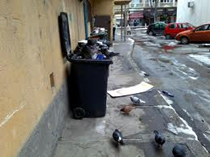 Rats show no respect for famed romantic locales, either. In 2008, Paris officials estimated the city’s rat population had reached 8 million, and since only about 2 million people make their homes in Paris proper, that meant there were about four rats pounding the pavement for every Parisian.
Rats show no respect for famed romantic locales, either. In 2008, Paris officials estimated the city’s rat population had reached 8 million, and since only about 2 million people make their homes in Paris proper, that meant there were about four rats pounding the pavement for every Parisian.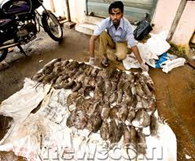 The sprawling metropolis plays host to tens of millions of rats, which carry the disease via their fleas and hence pose a danger to the city’s population.
The sprawling metropolis plays host to tens of millions of rats, which carry the disease via their fleas and hence pose a danger to the city’s population.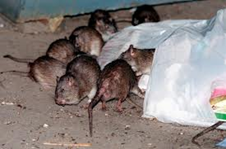 Like many densely populated areas, New York City has a prevalence of rats. Politicians and health authorities actively pursue policies and programs to manage the rat population. The exact number of rats is unknown, but it is estimated that there are at least as many rats as people. The city’s rat population is dominated by the Brown rat and Black rat.
Like many densely populated areas, New York City has a prevalence of rats. Politicians and health authorities actively pursue policies and programs to manage the rat population. The exact number of rats is unknown, but it is estimated that there are at least as many rats as people. The city’s rat population is dominated by the Brown rat and Black rat.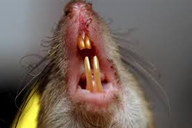 Rats like to live where people live. They quickly adjust to the neighborhood. Rats can thrive on just an ounce of food and water daily, so when they enter a neighborhood and gain access to meat, fish, vegetables, and grains, they will stay. Rats prefer to feed in and around homes, restaurants, and businesses. But they will settle for scraps from trash bags and cans, private yards and what they find at the community refuse disposal and transfer station. Rats get the shelter they need from tall weeds and grass, fences and walls, rubbish piles and abandoned appliances.
Rats like to live where people live. They quickly adjust to the neighborhood. Rats can thrive on just an ounce of food and water daily, so when they enter a neighborhood and gain access to meat, fish, vegetables, and grains, they will stay. Rats prefer to feed in and around homes, restaurants, and businesses. But they will settle for scraps from trash bags and cans, private yards and what they find at the community refuse disposal and transfer station. Rats get the shelter they need from tall weeds and grass, fences and walls, rubbish piles and abandoned appliances. A gas leakage is among the most feared human calamities of all time. Be it the poisonous gas leakages, the cooking gas leakages or the petroleum gas leakages. Each and every gas leakage brings with it the insurmountable wreckage of life and surroundings. There is no need to give an introduction into the world of grief provided by gas leakages. Let’s have a look at one such incident.
A gas leakage is among the most feared human calamities of all time. Be it the poisonous gas leakages, the cooking gas leakages or the petroleum gas leakages. Each and every gas leakage brings with it the insurmountable wreckage of life and surroundings. There is no need to give an introduction into the world of grief provided by gas leakages. Let’s have a look at one such incident.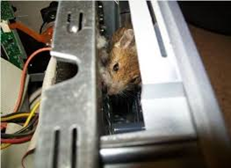 Mandhare said, “The petroleum company has informed us that the rubber tube was bitten by a mouse and had a 2mm hole. Probably, Sunita did not notice the hole. Also, the ventilation in the house was poor as the kitchen window was closed and the door was locked. However, the cylinder and regulator were intact” .
Mandhare said, “The petroleum company has informed us that the rubber tube was bitten by a mouse and had a 2mm hole. Probably, Sunita did not notice the hole. Also, the ventilation in the house was poor as the kitchen window was closed and the door was locked. However, the cylinder and regulator were intact” .